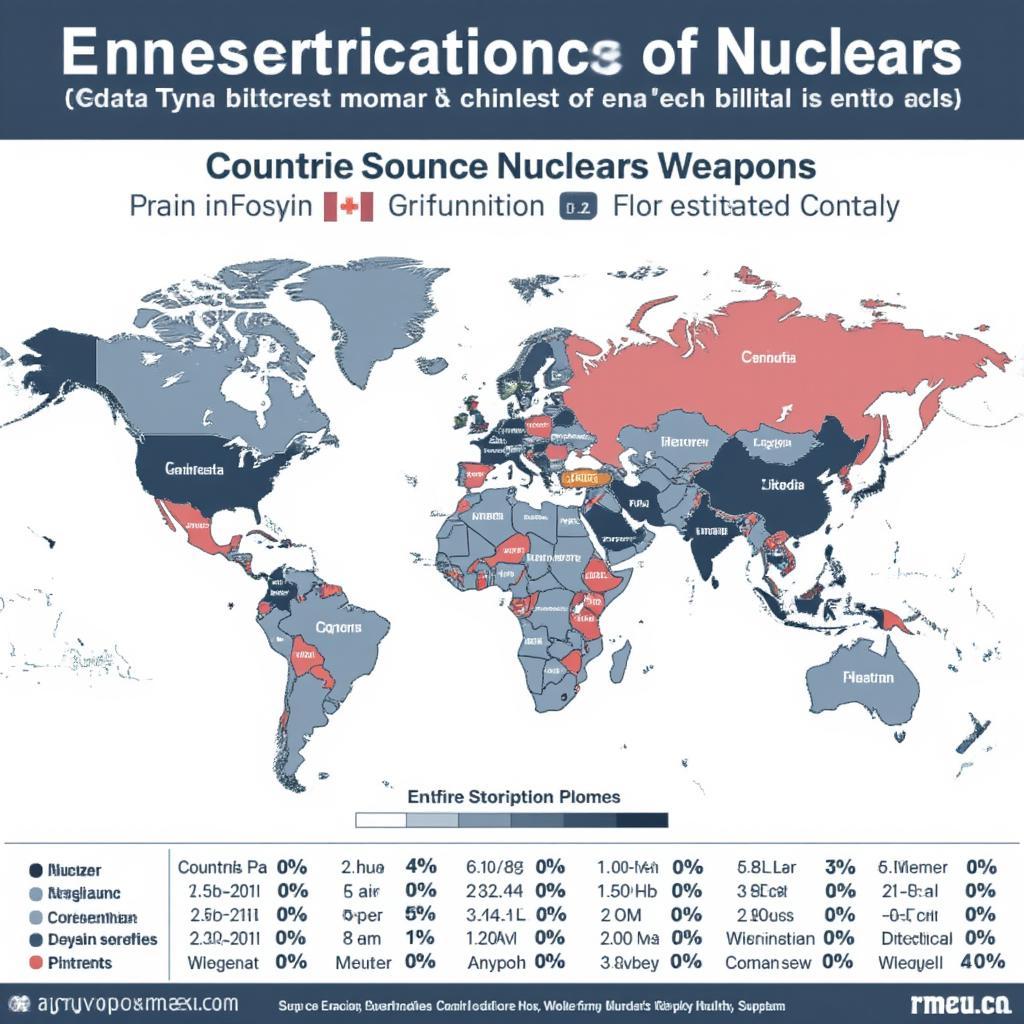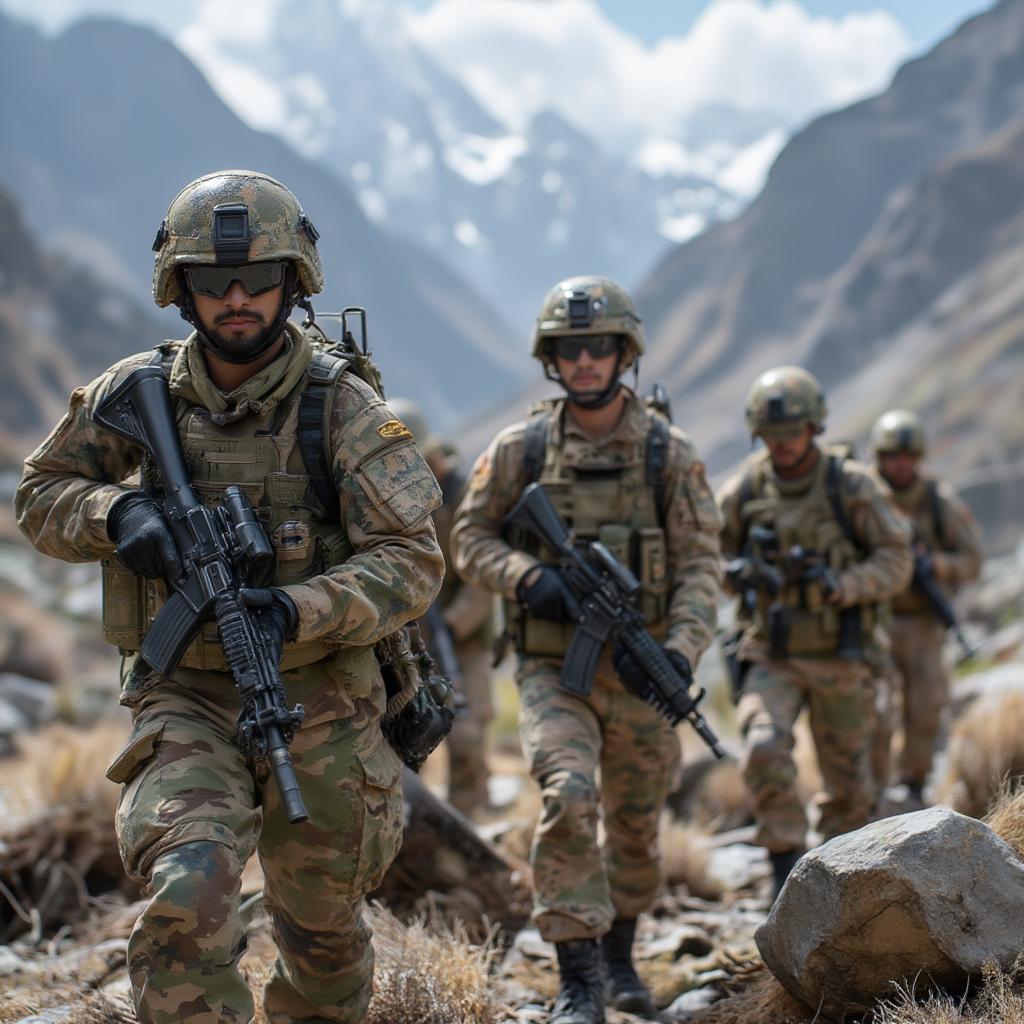The Most Powerful Military: A 2023 Analysis of Global Military Strength

The global landscape is constantly shifting, and with it, the balance of military power. Determining The Most Powerful Military in the world is a complex equation involving far more than just troop numbers. This in-depth analysis delves into the multifaceted aspects of military might, examining various factors that contribute to a nation’s defense capabilities in 2023.
Factors Defining Military Power in the Modern Age
Modern warfare has evolved significantly. While sheer size once dominated the battlefield, today’s military strength relies heavily on technological advancements, economic stability, and strategic alliances. A nation’s military power is now judged by a complex interplay of factors including:
Military Spending and Budget Allocation
A nation’s commitment to defense is often reflected in its military expenditure. Higher defense budgets can translate into more advanced weaponry, better training for personnel, and superior logistical capabilities. However, efficient budget allocation and investment in research and development are equally crucial.
Technological Superiority: The Cutting Edge of Warfare
The modern battlefield is increasingly dominated by technology. Advanced fighter jets, sophisticated missile defense systems, unmanned drones, and cyber warfare capabilities are reshaping military strategy. A nation’s ability to innovate and integrate cutting-edge technology significantly impacts its overall power.
Personnel Strength and Training: The Human Element
While technology plays a critical role, the human element remains indispensable. A well-trained, highly motivated, and professional military force is essential for effective combat operations. Factors such as troop morale, leadership quality, and specialized training programs contribute significantly to a military’s overall effectiveness.
Geopolitical Influence and Strategic Alliances
Military power extends beyond national borders. A nation’s geopolitical influence, its network of alliances, and its ability to project power on a global scale are crucial components of its overall strength. Strategic partnerships provide access to resources, intelligence sharing, and collaborative defense initiatives.
The Top Contenders: Analyzing Global Military Powers
Several nations consistently rank among the world’s most formidable military powers. While pinpointing the absolute “most powerful” is subjective and debatable, a comparative analysis reveals key strengths and weaknesses:
The United States: A Dominant Force
The United States boasts the world’s largest military budget and possesses a formidable arsenal of advanced weaponry, including a substantial nuclear deterrent. Its global network of military bases and strong alliances further enhance its power projection capabilities.
China: A Rising Military Power
China’s military has undergone rapid modernization in recent decades. Significant investments in naval and air power, coupled with advancements in missile technology, have elevated its military standing on the world stage.
Russia: A Nuclear Superpower with Conventional Capabilities
Russia retains a vast nuclear arsenal and possesses significant conventional forces. Its military strength lies in its extensive land forces, advanced air defense systems, and a robust cyber warfare program.
Nuclear Capabilities: A Deterrent and a Defining Factor
Nuclear weapons represent the ultimate deterrent in modern warfare. Possessing a credible nuclear arsenal significantly impacts a nation’s military power and its position in global politics. While their use remains highly unlikely, nuclear capabilities influence strategic decision-making and international relations.
The Future of Warfare: Emerging Trends and Challenges
The future of warfare is likely to be shaped by emerging technologies such as artificial intelligence, hypersonic weapons, and directed energy weapons. These advancements have the potential to revolutionize military operations and redefine the balance of power.

Assessing Military Power: Beyond Simple Metrics
Quantifying military power is a complex endeavor. While rankings and statistics provide a general overview, a truly comprehensive assessment requires a nuanced understanding of qualitative factors such as leadership, training, morale, and strategic doctrine.
“Assessing true military strength requires a holistic approach, considering not just hardware but also the human element and a nation’s strategic vision,” says Dr. Anya Sharma, a leading geopolitical analyst at the Institute for International Strategic Studies.
Conclusion: The Ever-Evolving Landscape of Military Power
The question of who possesses the most powerful military remains a subject of ongoing debate. The global balance of power is dynamic and influenced by a multitude of factors. As technology continues to advance and geopolitical alliances shift, the landscape of military power will undoubtedly continue to evolve. Understanding the complexities of military strength requires a comprehensive analysis that goes beyond simple metrics and considers the multifaceted dimensions of modern warfare. Analyzing future trends and adapting to the changing nature of conflict will be crucial for nations seeking to maintain or enhance their military power in the 21st century. The most powerful military isn’t just about having the most weapons; it’s about effectively leveraging all available resources to achieve strategic objectives.
“Future conflicts will be defined not just by who has the biggest bombs, but by who can effectively integrate emerging technologies and adapt to the changing nature of the battlefield,” adds General Michael Reed (Ret.), former Chief of Staff of the United States Army.




